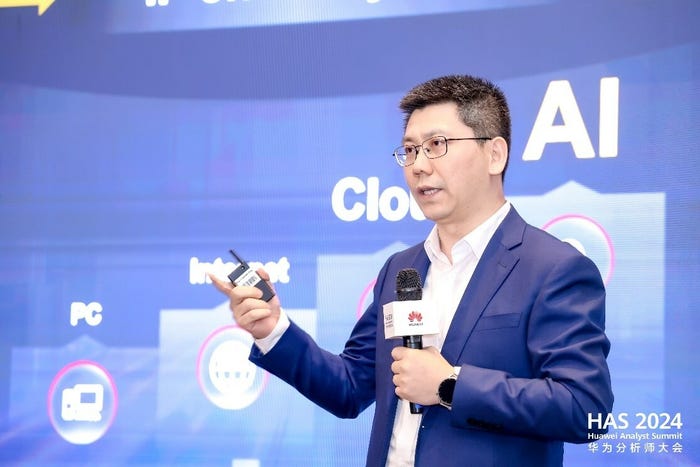Open source IoT operating systems are popular, but there are complexities for cybersecurity decision makers to address.
June 18, 2021

These days many operating systems for Internet of Things devices include an open-source license, but vigilance is needed to adequately protect the attack surface.
An ESG survey has indicated 38% of storage decision makers expect IoT workloads to drive on-premises storage spending increases over the next two years. Some 33% of respondents expected cloud spending increases.
The trend means that Internet of Things (IoT) is increasingly finding its way into the chief executive’s itinerary, as part of a renewed emphasis on cybersecurity protection and data security.
A slide deck prepared for IoT World Today by Chris Sherman, senior analyst for cybersecurity at Forrester, suggests around 37% of cybersecurity decision makers believed the greatest operational peril came from embedded IoT solutions in assets or operations, while 33% must contend with protecting embedded IoT in their products.
Going forward, it’s crucial for businesses to integrate open-source environments like Linux effectively, while avoiding security pitfalls that could jeopardize their data security.
:“The operating environment plays a key role in the management of these workloads,” said Paul Nashawaty, senior analyst at ESG Global. “Data growth from these workloads needs to be managed, but how IT vendors address this growth will be determined by the integration of the systems.”
Cybersecurity has been a threat for open source Linux systems. While the nature of the threat fluctuates over time, the incentive for attackers is arguably greater as connected devices have now become ubiquitous and provide a larger attack surface.
On the one hand, the global installed base of IoT devices is set to reach 46 billion by 2021, according to Juniper Research, and that increases the overall attack surface. But there are also a larger number of devices per network. This provides economies of scale to the value of stolen cyber goods. As it takes longer to hijack all nodes in the typical IoT network, multipronged cyber-marauders such as botnets might face something of an opportunity cost, Nashawaty said.
As IoT is pervasive, so are the dangers. One risible fiasco emerged in tech media reports four years ago, when a U.S. casino chain suffered a personal data breach from one of its internet-connected fish tanks.
The potential for breaches with reverberating effects will grow as a deluge of data is anticipated from more advanced IoT data sources, such as artificial intelligence and high-risk security footage.
Already away from the IoT sector there are cases of major firms suffering reputational damage. Nashawaty said: “[The risks include] compromised devices becoming part of a botnet, up to and including data loss. There are definite examples I’ve been given where data exfiltration has occurred via connected devices such as phones or printers.”
Safety First For Your Open Source OS
When selecting a distribution to run on IoT devices, it’s best to opt for open source IoT configurations that are specifically tailored to this environment. It’s also helpful to have the budget to back up your intentions and hire IT specialists that can keep the open source environment running smoothly.
There are plenty of options to choose from. Many Linux distributions are available with a free license, but it’s beneficial to think about which build will offer your IT personnel the most useful remedies when things go wrong.
Open source
Processing constraints will be one of the biggest considerations. The OS should be measured against the specs of an IoT device to ensure that it will run optimally. As the OS will reside on IoT devices, so it’s vital to consider how to control the operating system.
IoT device management software programs allow operational staff to supervise and keep track of each node’s OS. Some options are now offered as part of popular public cloud ecosystems – such as Azure IoT Central and Google Cloud IoT Core.
Some OS options utilize Linux, an open source operating system that’s been around since the 1990s. Linux’s big play has always been endearing clients that prioritize mission-critical cybersecurity – one of its most creditable users globally is the U.S. Department of Defense.
But there are various alternatives that are specifically built from the ground up to work with IoT devices. As such, these might be more effective to implement and operate.
For example, the open-source OS Riot was designed with IoT in mind on the back of a Unix kernel.
It can be executed as part of a Linux-hosted process – for example if your device management software depends on it – but has low power-use capacity and supports software execution across 8-, 16- or 32-bit compute architectures.
Once an OS is set up, ensure that all default usernames and passwords have been changed. This can be forgotten when things get busy on the retail or warehouse floor, and not everyone has easy access to dedicated IT.
“From a device perspective, changing default usernames and passwords sounds obvious, but many continue not to do it” Nashawaty said.
Software vendors targeting the commercial IoT space have worked hard to ensure their products play well with open source OSes. But platforms must remain protected at the IoT operating system level even when compute is carried out at the edge, which involves unique security concerns.
California-based Foghorn provides edge-native software that applies artificial intelligence hosted entirely within the client’s industrial IoT network, without requiring an external internet connection. The product works with open source IoT platforms to deliver real-time analytics, machine learning and AI capabilities.
“Security at the operating system level has always been important for any deployments, IoT or not,” said Sastry Malladi, chief technology officer at Foghorn.
“Having said that, security at the edge is relatively more important as you are directly connecting to highly expensive machinery and cybersecurity attacks/threats have to be taken very seriously,” he continued.
“Edge devices are not typically connected to any external networks, the threats are limited from an external source. However, the devices need to be protected from internal networks with all the security protection measures we described above.”
Patching Linux Is a Cornerstone of Secure IoT
Nashawaty said that consistent and timely patching of devices is also critical to solidify the open-source IoT environment as new vulnerabilities are discovered.
One important tool is the Common Vulnerabilities and Exposure system, a U.S.-hosted database providing comprehensive information on publicly disclosed computer security flaws.
The goal is to make it easier to share information about known vulnerabilities across organizations; each exposure is given a standardized identifier that can then be recognized and scrutinized by cybersecurity professionals.
IT pros must also take care to implement over-the-air updates with Wi-Fi or mobile broadband technologies – that is intelligent and flexible enough to serve all IoT endpoints.
Unlike proprietary operating systems such as Windows IoT, some open source platforms will lack a centralized patch manager for automatically countering new threats.There is a community of patch update hubs. The benefit is this means your operating system could be continuously secure, but only so long as IT personnel remain plugged in to the flow of information on known exposures.
Check for an open source alternative to Linux with regular security updates more akin to a traditional PC, which might be preferable. For example, Fuschia OS receives regular updates from its publisher Google, but there might be a trade-off in terms of flexibility.
Other open source OS offerings are popular because they enable IoT terminals to be updated remotely – this may be a boon if your network is highly dispersed geographically, or if the device is to be sold to a customer. Huawei’s LightOS, for instance, offers remote updates and has been installed on 50 million IoT devices.
Emerging technologies could change the paradigm of securing data as it passes from open source IoT platforms. Blockchain technology, for example, is regarded as a potentially fail-safe method of encryption, as it distributes authorization across several nodes – a concept known as the digital ledger. IoT-focused blockchain products include Maru, which can be installed on end-points to improve security, identity and interoperability, according to Deloitte.
““Blockchain is not a magic bullet for cybersecurity which is a massive concern for IoT enterprises,” said John Canali, senior analyst at Omdia and service provider IoT strategies.“However, adaptive companies can seek an alternative utilizing blockchain technology as opposed to working with players that focus on a securing a single operating system.”
About the Author(s)
You May Also Like



.png?width=300&auto=webp&quality=80&disable=upscale)


.png?width=300&auto=webp&quality=80&disable=upscale)